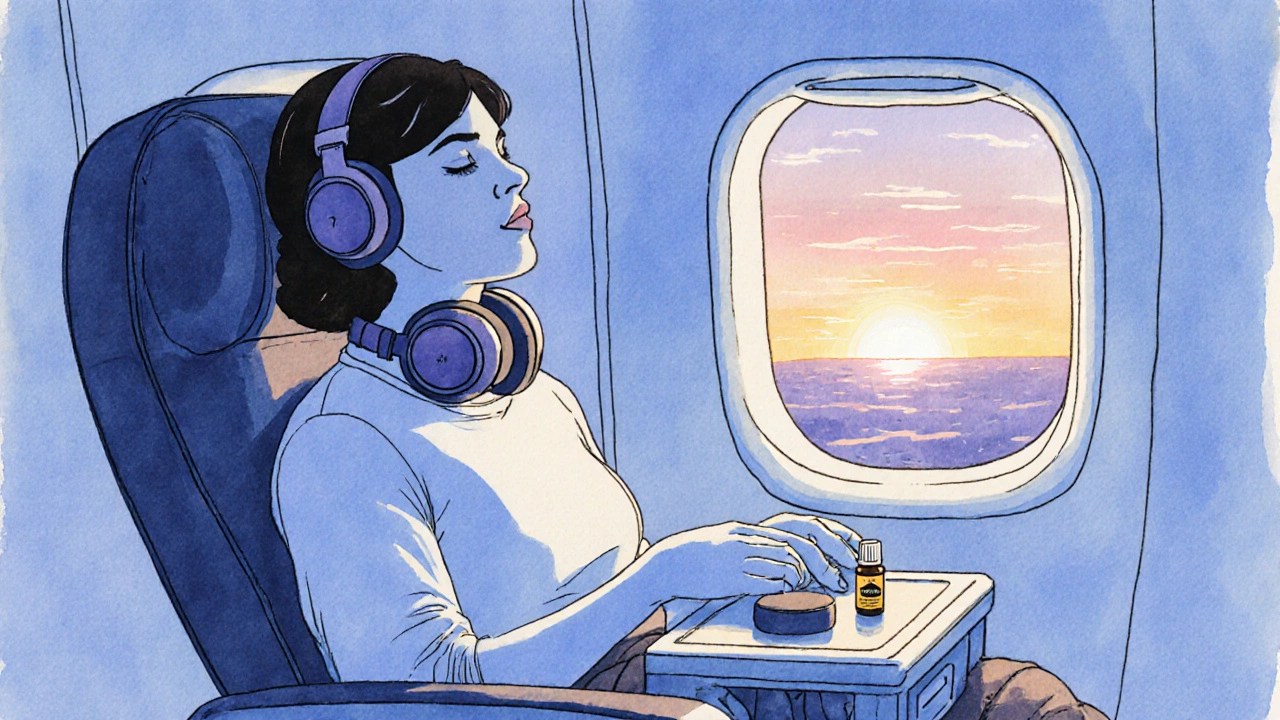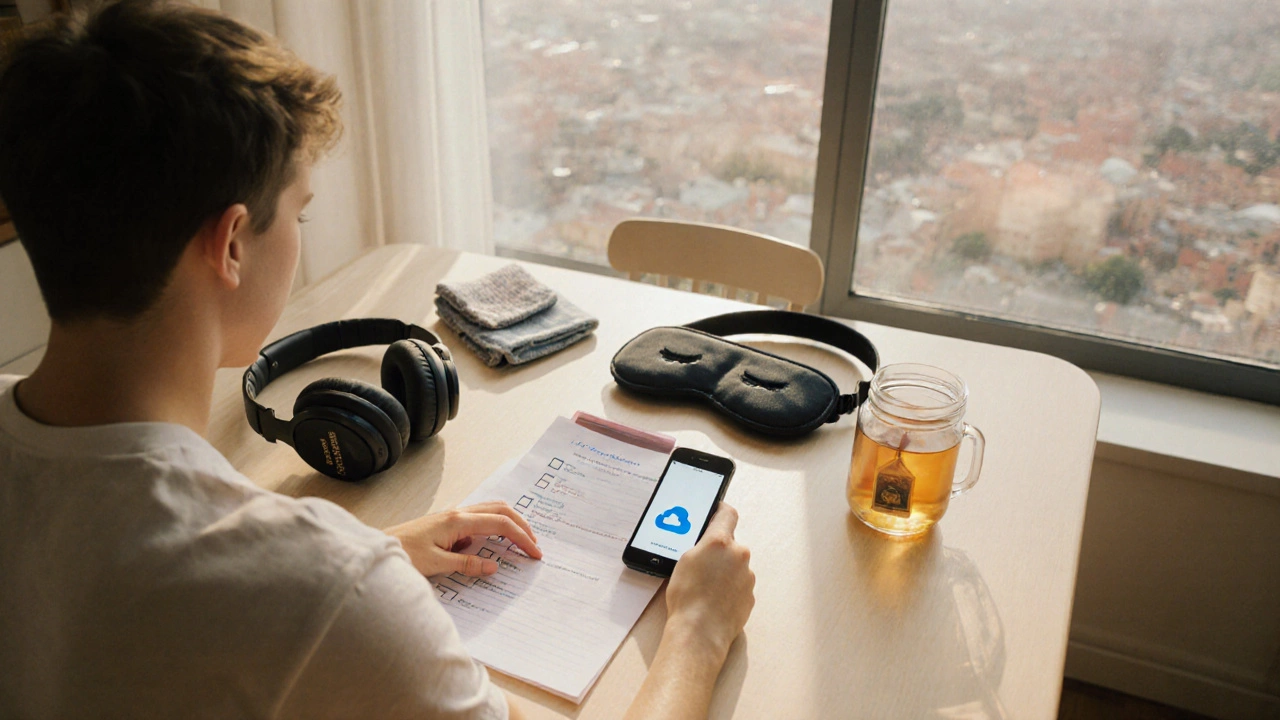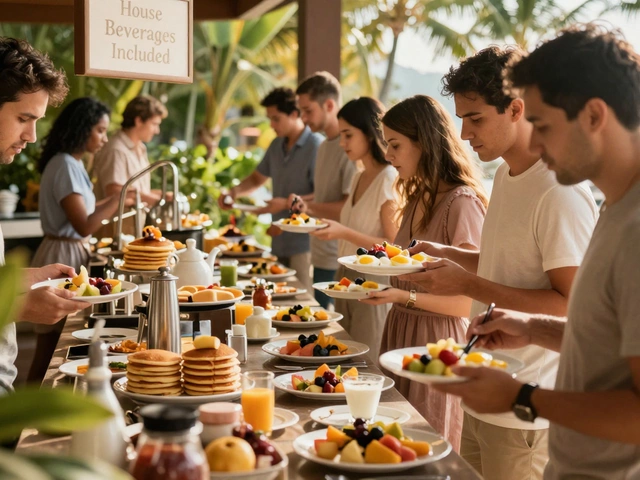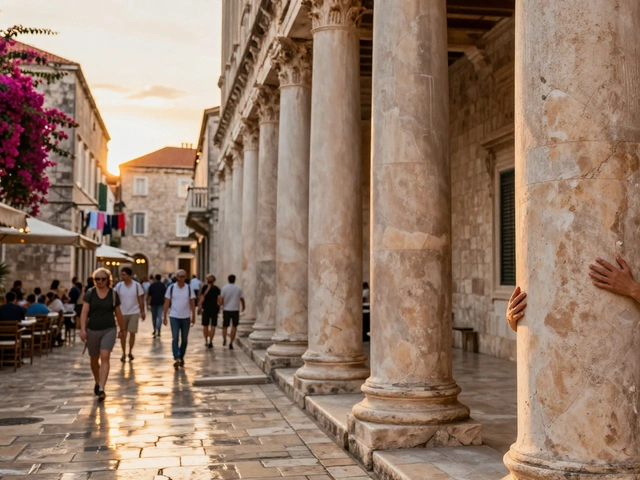Destination Stress Calculator
This tool evaluates how well a potential destination matches anxiety-reducing criteria discussed in the article. Answer the questions below to get a personalized stress level score and recommendations.
Key Takeaways
- Identify triggers early and use a simple pre‑trip checklist.
- Practice mindfulness or breathing exercises for on‑the‑spot relief.
- Consider low‑dose beta‑blockers or CBT‑based apps for long‑haul trips.
- Pack comfort items and enlist a supportive travel buddy.
- Choose destinations with easy logistics to keep the weekend stress‑free.
Understanding travel anxiety is a type of situational anxiety that spikes when you think about leaving home, navigating airports, or being in unfamiliar places. Typical symptoms include rapid heartbeat, sweaty palms, racing thoughts, and a strong urge to cancel plans. While occasional nerves are normal, persistent worry can ruin a weekend getaway before it even starts.
Research from the Anxiety and Depression Association of America shows that about 15% of frequent travelers report clinically significant anxiety levels. Knowing this, the first step is to treat the feeling as a signal, not a verdict. Once you pinpoint what sets off the anxiety-crowds, flight turbulence, or fear of the unknown-you can match the right coping tool to the specific trigger.
Prep Before You Go: The Pre‑Trip Planning Checklist
One of the most effective ways to lower anxiety is to eliminate uncertainty. A short, repeatable checklist can be a lifesaver. Below is a printable version you can keep on your phone or notebook.
- Itinerary Confirmation: Double‑check flight times, hotel check‑in, and transportation reservations at least 48hours before departure.
- Document Backup: Scan passport, ID, and insurance cards and store them in a secure cloud folder.
- Medication Review: If you use prescription or over‑the‑counter meds for anxiety, confirm dosage and pack extra copies.
- Comfort Kit: Include noise‑cancelling headphones, an eye mask, and a favorite tea bag.
- Emergency Contacts: Write down a list of people to call in case you feel overwhelmed.
Having these items sorted in advance reduces the mental load on the day of travel, freeing up brain space for enjoyment.

In‑Flight and On‑Ground Coping Techniques
When anxiety strikes mid‑journey, quick, discreet tactics are essential.
Mindfulness meditation involves focusing on the breath and observing thoughts without judgment. A five‑minute session can reset the nervous system. Apps like Insight Timer or Headspace offer guided meditations specifically designed for travelers.
Breathing exercises such as the 4‑7‑8 technique (inhale 4seconds, hold 7seconds, exhale 8seconds) lower cortisol levels within minutes. Practicing while seated in an airport lounge or during a flight’s ascent can keep panic at bay.
Physical movement also helps. Simple stretches-neck rolls, ankle circles, shoulder shrugs-re‑energize circulation and distract from racing thoughts.
Medications and Professional Help
For many travelers, lifestyle tweaks aren't enough for longer trips or high‑stress itineraries. Two evidence‑based medical options often recommended are low‑dose beta‑blockers and cognitive‑behavioral therapy (CBT)-based tools.
Beta‑blockers (e.g., propranolol) block the physical symptoms of anxiety-rapid heart rate and tremors-by dampening adrenaline. A typical dosage is 10‑40mg taken an hour before a flight. They don’t affect mental clarity, making them a favorite among business travelers.
Cognitive‑behavioral therapy (CBT) teaches you to reframe catastrophic thoughts into realistic expectations. If you can’t see a therapist in person, digital CBT programs like MoodGYM or Sanvello provide structured modules and daily exercises.
In addition, travel therapy apps combine CBT principles with on‑the‑go reminders. They often feature a “panic button” that launches calming audio, breathing timers, or a quick grounding exercise.
Comparison of Core Anxiety‑Relief Approaches
| Approach | How it works | Typical onset | Effectiveness | Cost | Best for |
|---|---|---|---|---|---|
| Mindfulness & Breathing | Focuses on breath, body sensations, and present‑moment awareness | Immediate (seconds) | Moderate‑high (studies show 60‑70% reduction in acute symptoms) | Free‑to‑low (apps $0‑$10/month) | Short trips, airport waits, on‑the‑fly panic |
| Beta‑blockers | Blocks adrenaline receptors to reduce physical symptoms | 30‑60minutes after ingestion | High for physical symptoms; does not address thoughts | Prescription cost $10‑$30 per trip | Long‑haul flights, high‑stress business travel |
| CBT & Therapy Apps | Reframes negative thoughts, provides coping tools, tracks progress | Days‑weeks (skill building) | High long‑term (up to 80% symptom reduction after 6‑8 weeks) | Subscription $5‑$15/month | Frequent travelers, chronic anxiety, anyone wanting lasting change |

Packing Comfort Items & Enlisting a Support Companion
Physical comforts can act as grounding anchors. Consider these proven items:
- Noise‑cancelling headphones to block loud announcements and chatter.
- Weighted blanket lap pad for a gentle, calming pressure.
- Herbal tea bags (chamomile or peppermint) for a soothing ritual during layovers.
- Essential‑oil roll‑on (lavender) applied to pulse points to trigger a relaxation response.
Traveling with a trusted friend or partner-your support companion-adds a safety net. Agree on a discreet signal (e.g., a tap on the arm) that lets them know you need a quick distraction or a moment of reassurance.
Designing a Low‑Stress Weekend Getaway
Choosing the right destination makes all the coping work worthwhile. Look for places with:
- Direct flights or short layovers to minimize airport time.
- Relaxing accommodations (boutique hotels with private check‑in).
- Easy navigation-clear signage, walkable streets, and reputable public transport.
- Opportunities for calming activities (nature trails, spa services, quiet cafés).
Booking a flexible, refundable rate adds a psychological safety net. If anxiety spikes before the trip, you can reschedule without financial loss. Also, consider travel insurance that covers “trip cancellation for medical reasons”-it gives an extra layer of peace of mind.
Finally, schedule downtime. A common mistake is to over‑pack an itinerary, which spikes stress. Allocate at least half of each day for unstructured, low‑key enjoyment-like sipping coffee on a balcony or strolling through a park.
Frequently Asked Questions
Can I use beta‑blockers without a prescription for travel anxiety?
No. Beta‑blockers are prescription medications, and using them without medical supervision can cause side effects or interact with other drugs. Always consult a doctor before starting.
How long should I practice mindfulness before it becomes effective?
Studies suggest noticeable reduction in acute anxiety after as little as 5‑10 minutes of daily practice for two weeks. Consistency is more important than duration.
Are travel therapy apps safe for people with severe anxiety?
Therapy apps are useful tools, but they are not a substitute for professional counseling when anxiety is severe. Use them as a supplement and consider a therapist for deeper work.
What are the best comfort items to pack for a nervous flyer?
Noise‑cancelling headphones, a small weighted lap blanket, lavender essential‑oil roll‑on, and a favorite snack or tea can create a familiar, soothing environment.
How can I convince a travel buddy to help with my anxiety?
Explain the specific triggers you experience and suggest simple ways they can assist, like a gentle reminder to breathe or a quick distraction. Most friends are happy to help once they understand the need.






